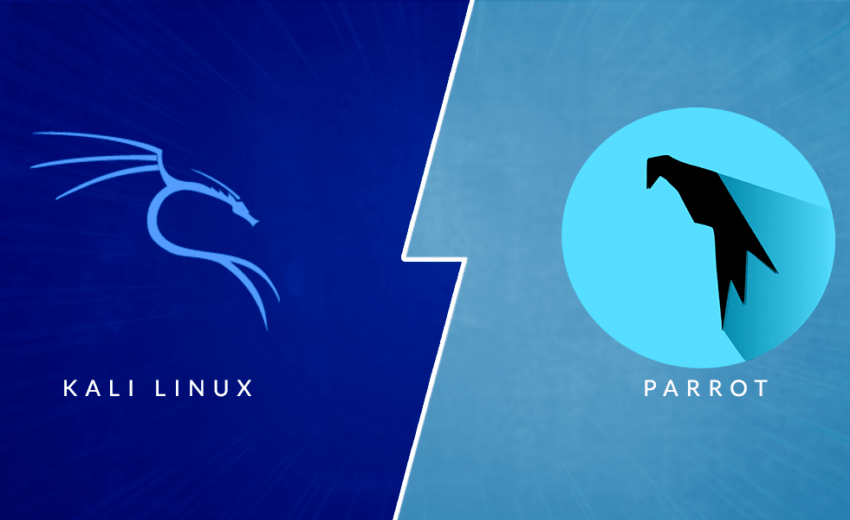
Table of Contents
In the world of ethical hacking and cybersecurity, a heated debate always arises: which is better: Kali Linux or Parrot OS. Although both operating systems come preloaded with the essential penetration testing tools, the real discussion emerges when evaluating user experience and everyday usability. Today, I offer you a critical look—with a dash of sarcasm and technical rigor—to determine which one fits best for a professional. (And yes, popularity aside, functionality matters!)
Introduction: Context and Popularity
Kali Linux’s reputation as the go-to platform for ethical hacking is undisputed. With a design solely focused on penetration testing, it’s no surprise that it has become a digital icon. However, Parrot OS—despite not having the same viral notoriety—is gaining followers thanks to its versatility.
The question which is better: Kali Linux or Parrot OS is not merely one of popularity. While Kali Linux capitalizes on its “all-in-one for the professional hacker” image, Parrot OS offers a more balanced environment that integrates security tools into a system comfortable enough for everyday tasks. Even though both operating systems include the essential ethical hacking tools, the ease of interacting with the system is crucial for those eager to learn and work without sacrificing productivity.
Insider Note: Many users stick with Kali Linux simply because “everything else freezes” when you try to configure it for daily tasks. Is it really worth sacrificing comfort just for the digital warrior image?
Internal Resource: DanyDav – Trusted Professional Resources
My Personal Experience
After testing both systems, I can confidently say that my answer to which is better: Kali Linux or Parrot OS leans towards Parrot OS. Although I have used Kali Linux on several occasions, what truly convinced me was the flexibility and ease of use offered by Parrot OS. This system is designed for the ethical hacker who also needs a regular, reliable workstation.
While Kali Linux is strictly optimized for security testing—where “everything” is geared toward hacking—Parrot OS provides an environment that suits both daily programming and general computer use. Even though both come equipped with all the necessary tools for deep analysis, Parrot OS adapts better to everyday tasks, which can be a deciding factor for anyone balancing both security and general productivity.
Comparison of Features
The following table summarizes the key differences between Kali Linux and Parrot OS. Notice how each system plays the card of specialization versus versatility:
| Feature | Kali Linux | Parrot OS |
|---|---|---|
| Focus | Exclusively oriented toward ethical hacking | Hybrid: ethical hacking and everyday use |
| Preinstalled Tools | A vast collection tailored for penetration testing | Extensive, yet including general applications |
| User Interface | Minimalistic, focused on specific tasks | More user-friendly and versatile for many tasks |
| Performance | Optimized for performance in security testing | Solid performance in mixed-use environments |
| Configurability | Excellent for configuring hacking tools | Highly customizable for overall use |
| Documentation & Community | Extensive docs and an active community | Growing community and expanding support |
External References:
This comparison clearly shows that while Kali Linux shines in focused penetration tests, Parrot OS offers a balance that benefits those looking for stability and versatility beyond just ethical hacking. In reality, the answer to which is better: Kali Linux or Parrot OS depends on what you need from your system.
Ease of Use and Adaptability
One of the biggest criticisms of Kali Linux is its rigidity in everyday use. Everything is designed to maximize hacking capabilities, which can result in an interface that isn’t as friendly for regular tasks. In contrast, Parrot OS comes off as a more complete solution—designed to excel in both security testing and daily activities. This benefit is invaluable for those who switch between work and leisure.
For newcomers to ethical hacking, the learning curve is a key factor. When answering which is better: Kali Linux or Parrot OS from a usability standpoint, Parrot OS takes the lead. It allows you to dive into penetration testing without the pressure of an overly specialized interface hindering your daily operations.
Sarcastic Tip: If you thrive on the adrenaline of having every function right at your fingertips, Kali Linux might be your playground. But if you’d rather not feel like each click is hurling you into the digital abyss, perhaps Parrot OS is your best bet.
Configuration and Personalization
Another notable advantage of Parrot OS is its high degree of configurability. For users who enjoy tweaking and personalizing their environment, Parrot OS offers an impressive range of options. You can adjust system settings, customize the desktop environment, and manage built-in tools intuitively—all without needing to reinvent the wheel every time a small change is desired.
In contrast, Kali Linux—with its ultra-specialized focus—can feel somewhat “closed” off. This isn’t to say it’s inflexible, but its default configuration is strictly aimed at security tasks, which some might find limiting. So, when we ask again which is better: Kali Linux or Parrot OS, the answer seems to favor Parrot OS if you value adaptability and customization without excessive hassle.
Performance in Daily Use
When it comes to day-to-day performance, Parrot OS truly shines. Tests indicate that even while running advanced hacking tools, the system behaves much more “user-friendly” for everyday activities like web browsing, document work, or multimedia consumption.
While Kali Linux performs relentlessly in controlled testing environments, Parrot OS strikes a balance that makes it ideal for users who do not wish to compromise their daily experience. As some experts might put it, which is better: Kali Linux or Parrot OS is determined not only by tool quality but by the overall user experience.
Integration with Internal and External Resources
To further support this analysis, it’s important to highlight the significance of good resource integration. In Parrot OS, the availability of ethical hacking tools is matched by an environment that supports regular computer use, allowing for seamless switching between security tasks and daily activities. On the other hand, Kali Linux, while robust in its field, can become that “battle-hardened” system which isn’t optimized for everyday tasks, thus limiting the overall user experience beyond penetration testing.
The recurring question which is better: Kali Linux or Parrot OS becomes even more intriguing when considering that everyday computer use goes far beyond security—it encompasses productivity, comfort, and sometimes a pinch of humanity amid lines of code. If you don’t want your system to turn into a constant challenge every time you send an email, Parrot OS emerges as the rational choice.
Recommended Links:
- Explore the official Kali Linux documentation for an in-depth look at its features.
- Find out more about Parrot OS on its official website.
- Check out additional ethical hacking resources on DanyDav.
Conclusion
We now arrive at our extensive analysis aiming to answer the great question: which is better: Kali Linux or Parrot OS. The answer isn’t black and white, as both systems have their unique strengths that depend on what you need. If you’re someone who demands an ultra-specialized environment and doesn’t mind sacrificing everyday comfort, Kali Linux might be your choice. However, if you value a system that seamlessly blends ethical hacking with everyday usability, Parrot OS clearly comes out ahead.
For those new to the cybersecurity world, Parrot OS appears friendlier, allowing you to learn and experiment without the pressure of an interface solely tailored for penetration testing. This analysis—infused with a bit of irony and technical depth—demonstrates that despite Kali Linux’s popularity, the real answer to which is better: Kali Linux or Parrot OS ultimately depends on your individual needs and everyday habits.
Remember: in the realm of cybersecurity, there is no one-size-fits-all answer. The choice will depend on your workflows, past experiences, and most importantly, which system feels more comfortable in your daily routine. Who would have thought that the rivalry between these operating systems would have such a human touch?
If you’d like to dive even deeper into the subject and hear other experts’ opinions, I invite you to visit more articles and resources on DanyDav. There you’ll find tutorials and comparisons to help you decide the best option for both your professional practice and everyday use.
In summary, the critical comparison between Kali Linux and Parrot OS is as fascinating as it is complex. And when you find yourself pondering again which is better: Kali Linux or Parrot OS, the final decision is yours—choose the tool that aligns best with your requirements while keeping that essential human element in mind.





